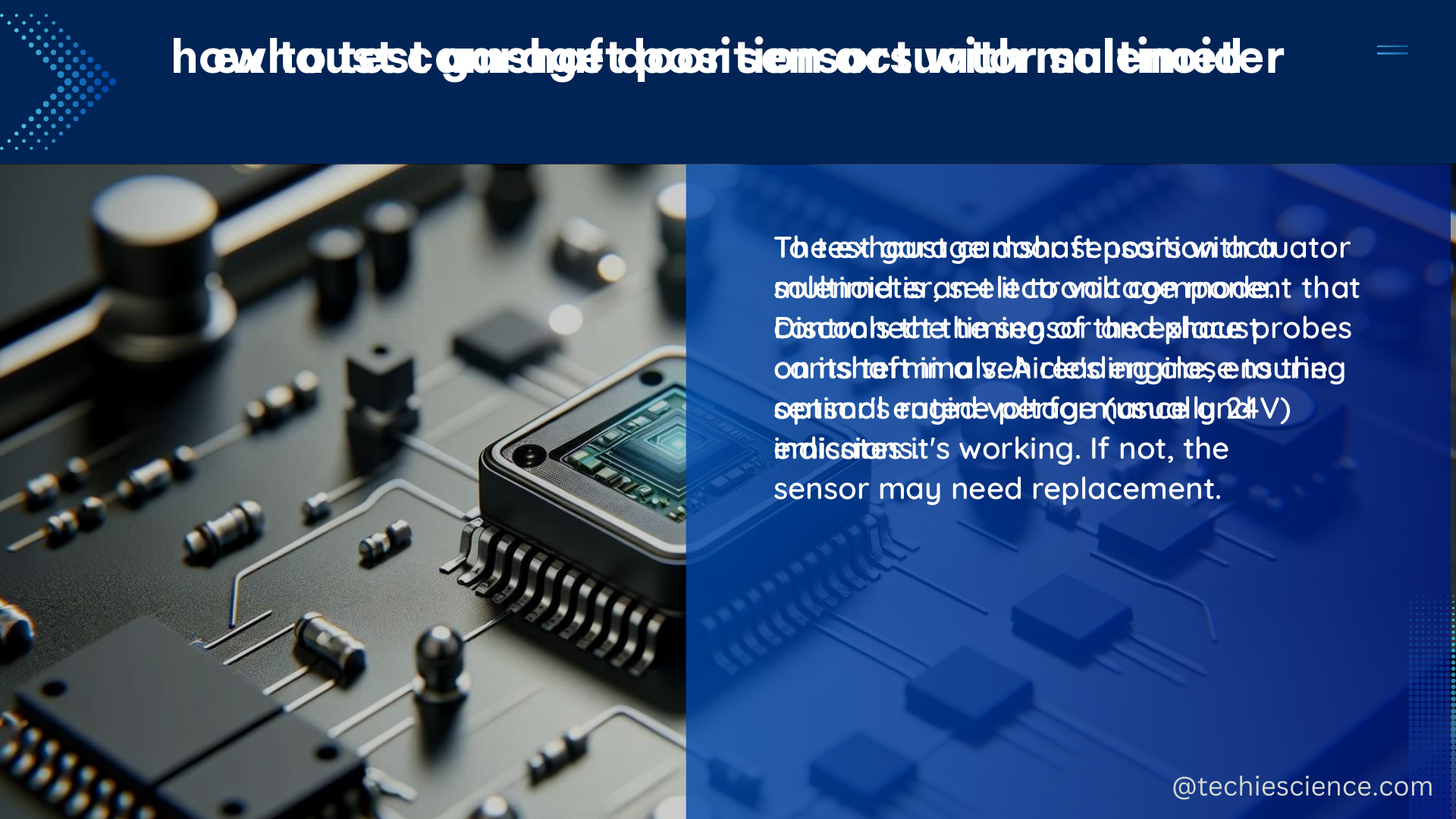The exhaust camshaft position actuator solenoid is a critical component in modern engines, responsible for controlling the amount of engine oil flow to a camshaft position actuator. This actuator can change the camshaft angle by up to 25 degrees, playing a significant role in the engine’s performance and emissions.
Understanding the Exhaust Camshaft Position Actuator Solenoid
The exhaust camshaft position actuator solenoid is an electronically controlled valve that regulates the flow of engine oil to the camshaft position actuator. This actuator, in turn, adjusts the timing of the exhaust valves, allowing the engine to optimize its performance and reduce emissions.
The solenoid is typically located near the exhaust camshaft, and it is connected to the engine control module (ECM) via a wiring harness. The ECM monitors various engine parameters, such as engine speed, load, and temperature, and uses this information to control the solenoid’s operation.
Measuring the Solenoid’s Resistance

One of the key ways to test the exhaust camshaft position actuator solenoid is to measure its resistance across the two pins. The ideal resistance range for a healthy solenoid is between 8 and 12 ohms.
Here’s a table that outlines the resistance values and their corresponding implications:
| Resistance Value | Implication |
|---|---|
| 8-12 ohms | Solenoid is functioning within the normal range. |
| Less than 8 ohms | Solenoid may be shorted, indicating a potential issue. |
| Greater than 12 ohms | Solenoid may be open or have a high resistance, indicating a potential issue. |
| Kilo ohms range | Solenoid is likely faulty and needs to be replaced. |
It’s important to note that these resistance values are just a general guideline, and the actual range may vary slightly depending on the specific make and model of the vehicle.
Performing a Power Test
In addition to measuring the resistance, you can also perform a power test on the exhaust camshaft position actuator solenoid. This involves connecting the solenoid directly to a 12-volt power source and observing its behavior.
When the solenoid is powered, you should hear a distinct clicking sound, indicating that the solenoid is functioning properly. If the solenoid does not click or make any noise, it may be faulty and in need of replacement.
It’s worth noting that a failed electrical test does not necessarily mean that the solenoid is beyond repair. The mechanical components of the solenoid can also fail, and these issues may not be detectable through electrical testing alone.
Replacing the Solenoid
If the exhaust camshaft position actuator solenoid is found to be faulty, it can be relatively straightforward to replace it. Here’s a step-by-step guide:
- Disconnect the battery to prevent any electrical issues during the replacement process.
- Locate the solenoid, which is typically held in place by two 10mm bolts.
- Use a ratchet to loosen and remove the bolts, then gently rock the solenoid from side to side to break the seal.
- Carefully pull the solenoid straight up, as it will be soaked in engine oil.
- Clean the mounting surface to ensure a proper seal for the new solenoid.
- Install the new solenoid, making sure it is properly seated and secured with the two 10mm bolts.
- Reconnect the battery and start the engine to verify that the issue has been resolved.
In some cases, it may be necessary to perform a “relearn” procedure to reset the engine control module (ECM) and ensure that it recognizes the new solenoid.
Conclusion
The exhaust camshaft position actuator solenoid is a critical component in modern engines, responsible for controlling the timing of the exhaust valves. By understanding how to test and replace this solenoid, you can effectively diagnose and address any issues related to engine performance and emissions.
Remember to always follow the manufacturer’s recommendations and safety guidelines when working on your vehicle, and don’t hesitate to seek professional assistance if you’re unsure about any aspect of the repair process.
References:
– YouTube Video on Camshaft Position Actuator Solenoid Replacement
– Chevyhhr.net Forum Thread on Camshaft Position Actuator Solenoid Valve Replacement
– Chevymalibuforum.com Thread on P0010 Light Still On After Camshaft Position Sensor Change
– Trailvoy.com Thread on P0014 Camshaft Position Actuator Solenoid Relearn

The lambdageeks.com Core SME Team is a group of experienced subject matter experts from diverse scientific and technical fields including Physics, Chemistry, Technology,Electronics & Electrical Engineering, Automotive, Mechanical Engineering. Our team collaborates to create high-quality, well-researched articles on a wide range of science and technology topics for the lambdageeks.com website.
All Our Senior SME are having more than 7 Years of experience in the respective fields . They are either Working Industry Professionals or assocaited With different Universities. Refer Our Authors Page to get to know About our Core SMEs.